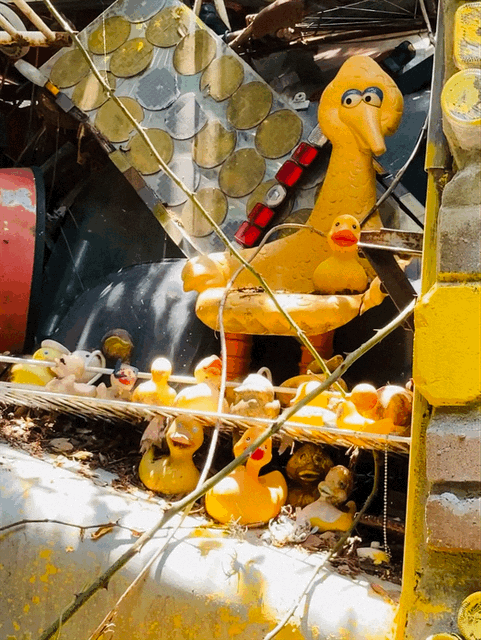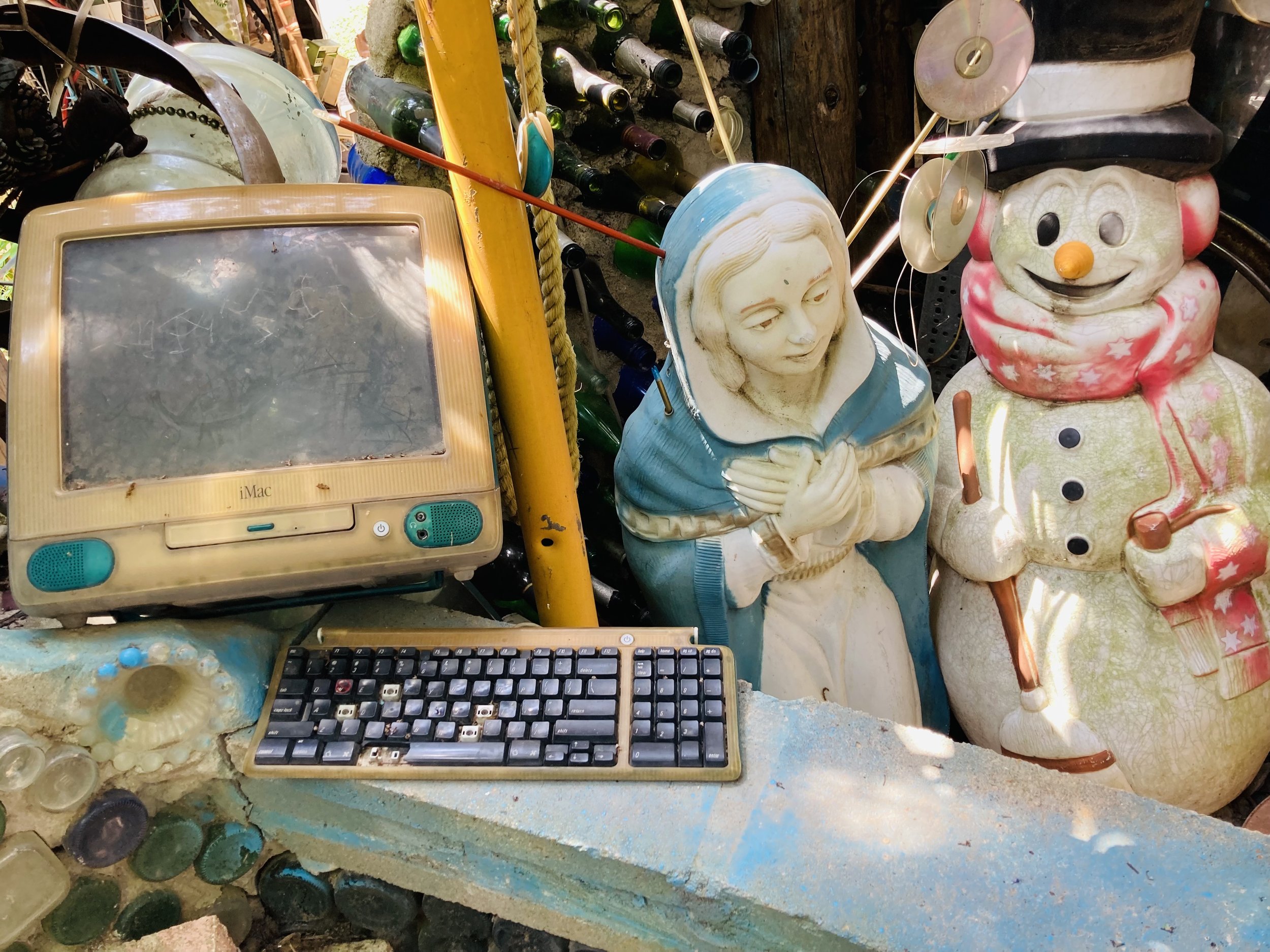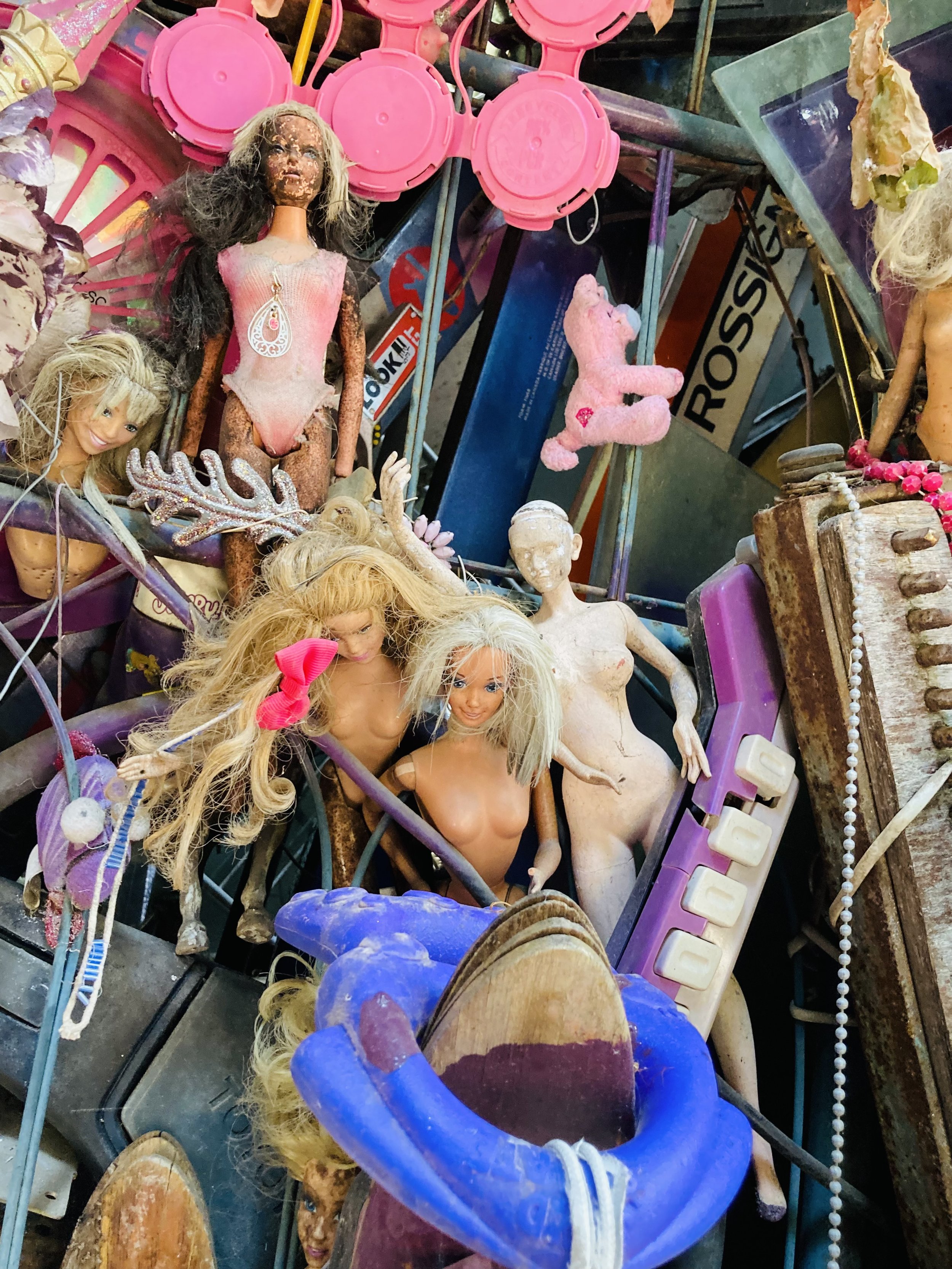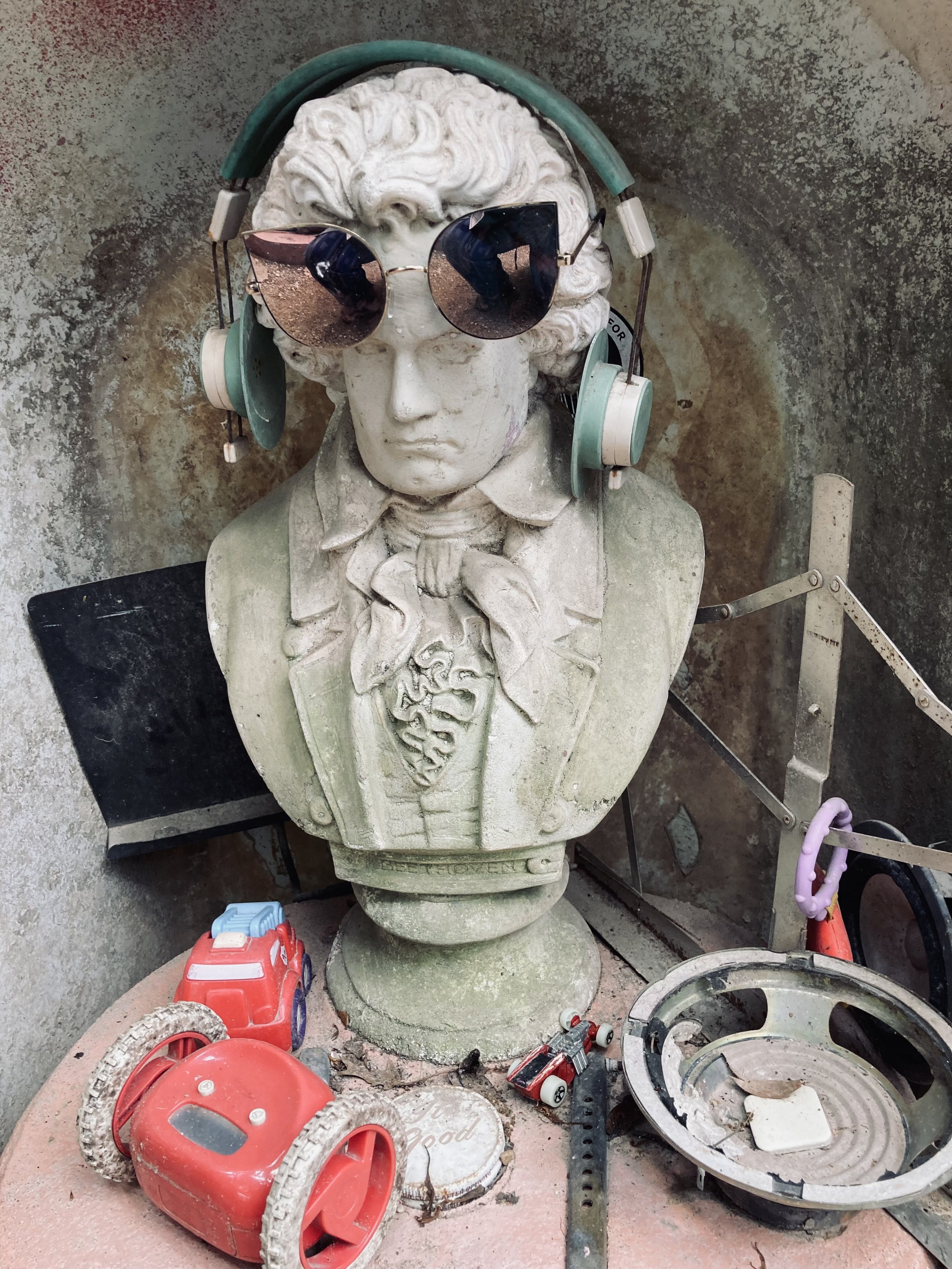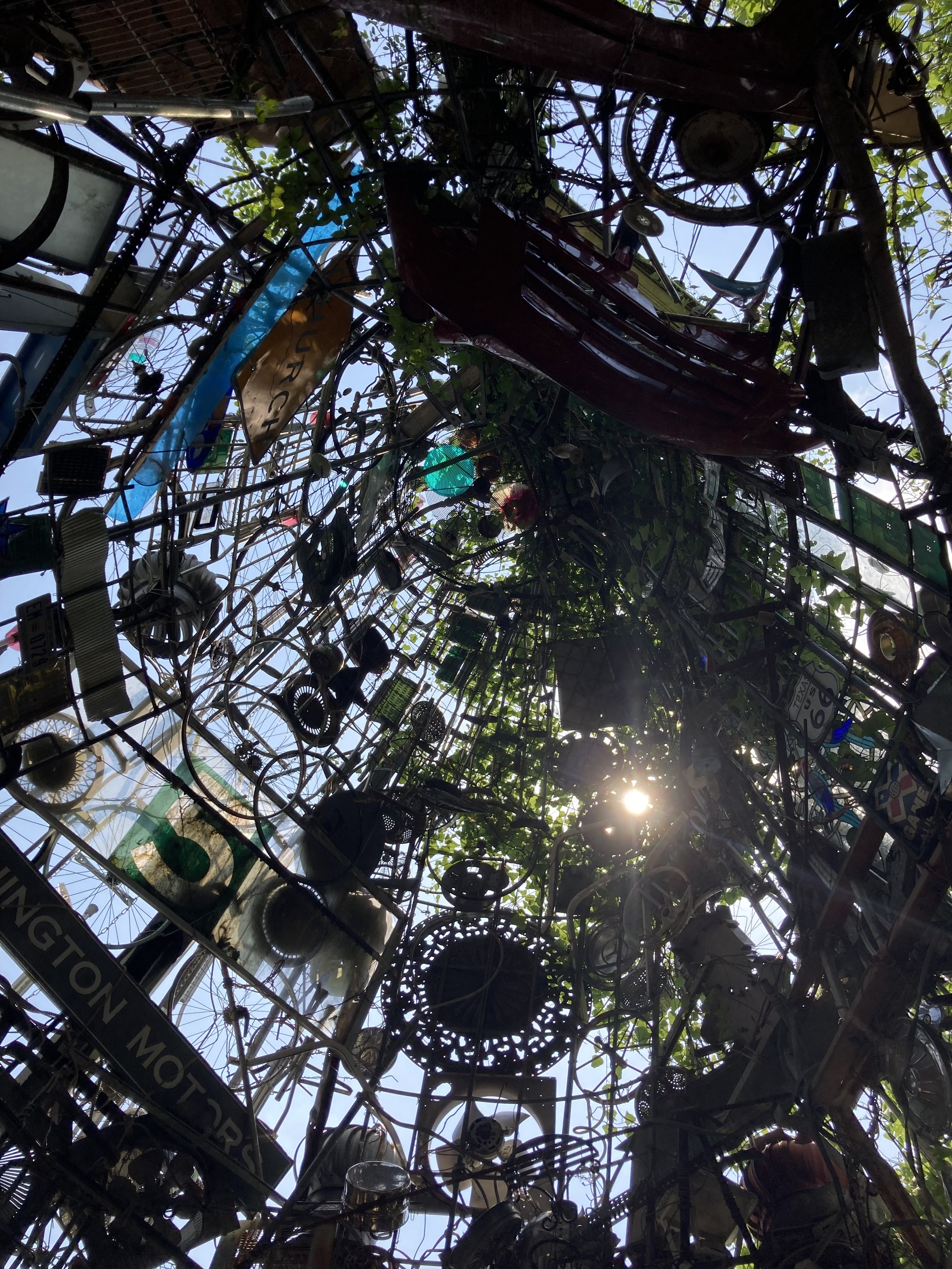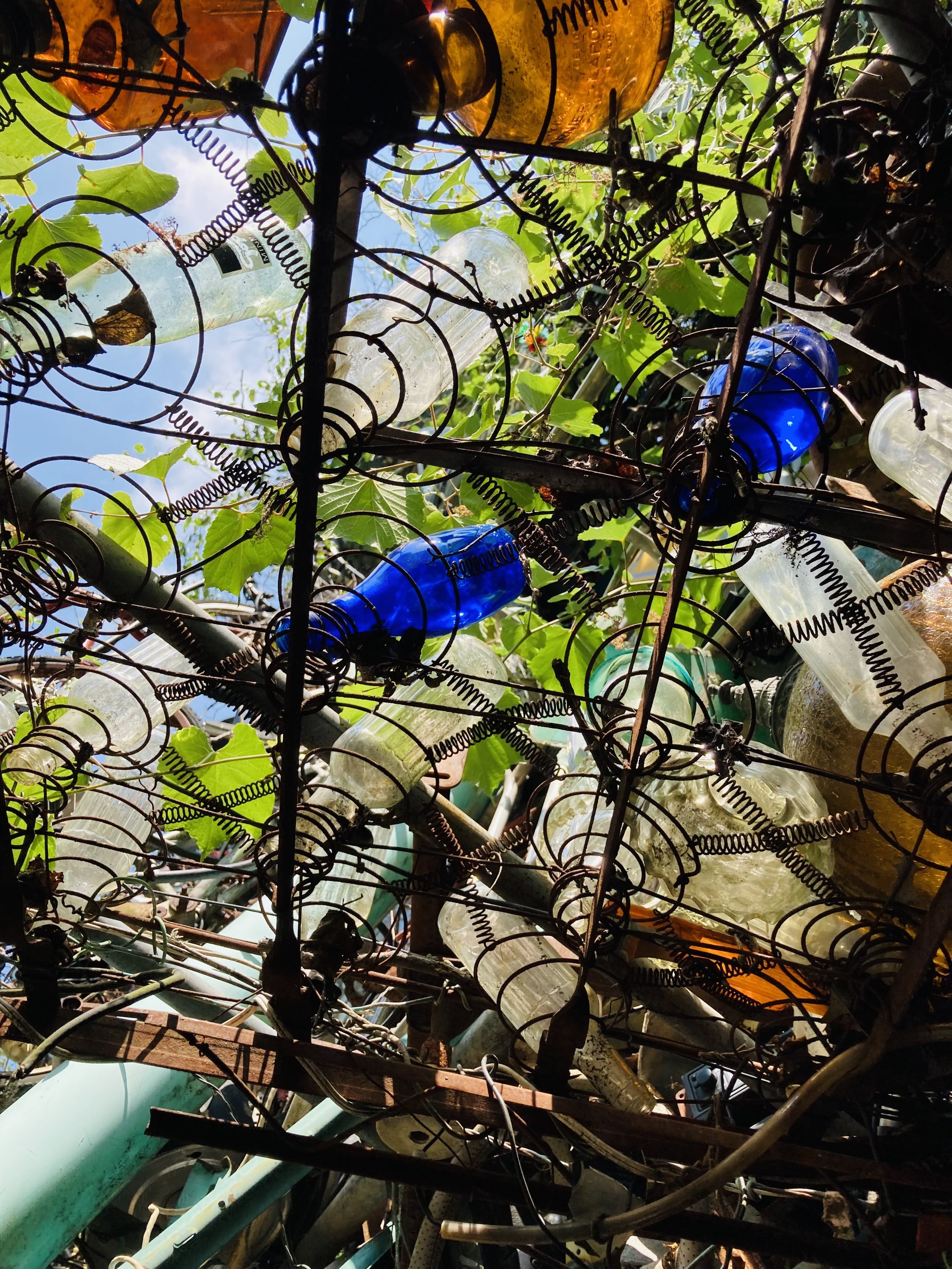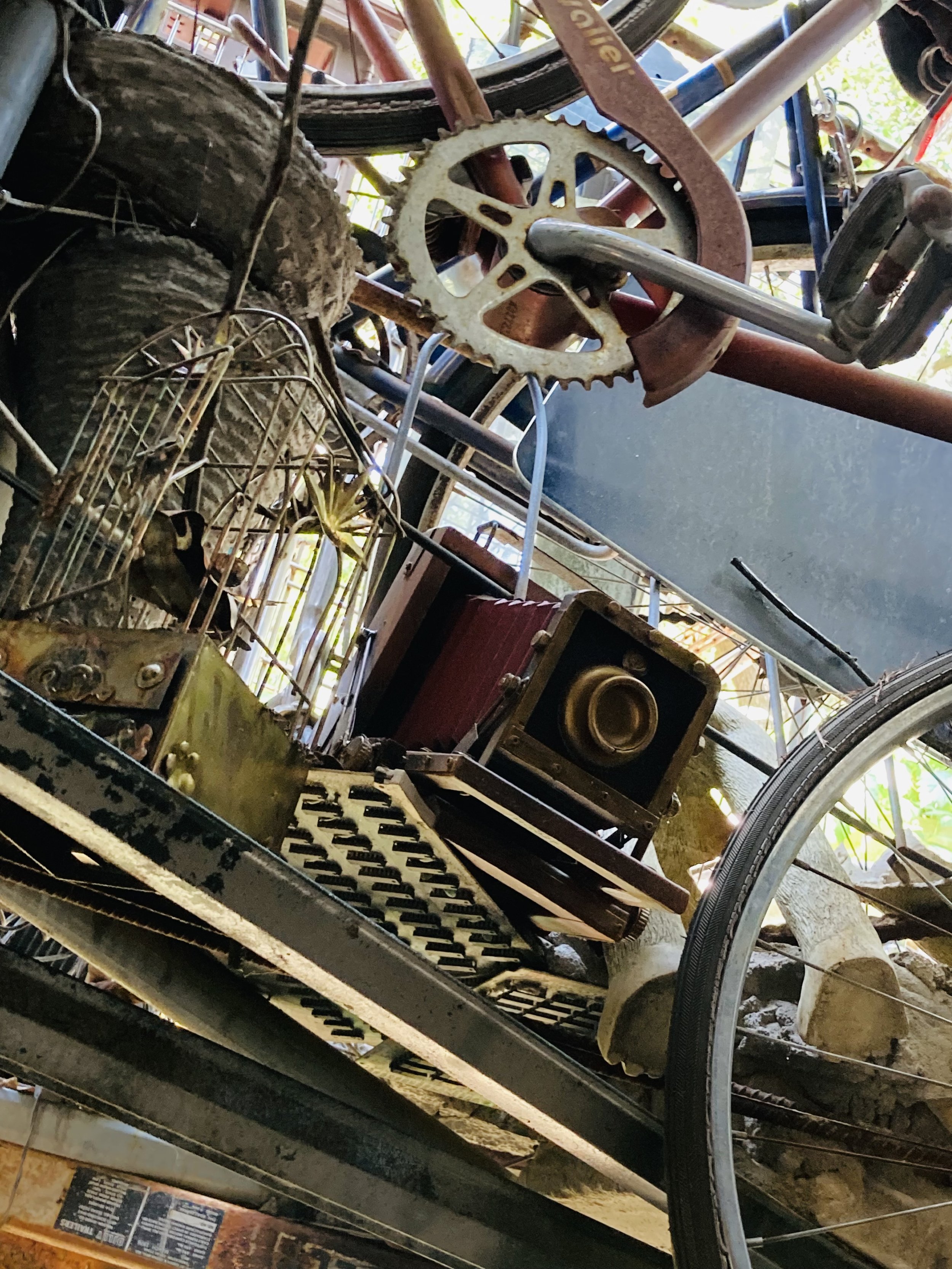I cursed a storm when I discovered that my dentist and his temple of oral hygiene had hightailed it to digs on the cheap side of south Austin. Fewer dental patient visits during the pandemic had done him in; so did skyrocketing price of commercial real estate rentals. I grabbed my iPhone and looked up his new address on Google Maps. I cursed even more when I realized that my carlessness meant an hour-long one way trip for an appointment. My outraged finger traced the route to his office on my phone map and saw a name—The Cathedral of Junk—so outrageous I stopped snarling and started researching.
The Cathedral—all 60 tons of it—is actually part of a backyard art installation by Vince Hannemann, an oddball-and-proud local who calls himself the Junk King. It’s a phrase he had tattooed, one green letter per finger, on the hands that started building the Cathedral back in 1989. This otherwise self-effacing gent will gladly let you into his sanctum sanctorum. But only if you make an appointment and park in his driveway. It’s for his long-suffering neighbors who’ve had to deal with tourist wolf packs, all-might music jams, hipster weddings and television news crews in big white vans.
Standing 33 feet tall, the Cathedral seems like a random pile of objects you can find at the Austin city dump—tires, circuit boards, toys, bottles, toilets, shopping carts, furniture, bicycles and car parts—and a few things you can’t, like a NASA nosecone. Poke around a little and ask a few questions, though, and you’ll start to see method in the madness. The material Vince collects or that gets donated to him often doesn’t make the final cut. What remains gets loosely “organized” by color, theme and form, then woven together with wire or set into place with hot glue or cement.
I took a Saturday bus from the northeast side to get to it. That meant traveling through the great glass maze of downtown I’ve come to loathe. It’s a crowded mess now, dominated by futuristic-looking high-rises and building projects that Manhattanize every square inch of land available. Traffic snarls easily here on two-lane streets not built to carry so many vehicles. The south side area where Vince lives—lush, low-rise, spacious and quiet—immediately made me feel nostalgic. This was the Austin I remembered from a decade ago, the decade I moved here. Not the postmodern monstrosity it’s become.
Entering Vince’s backyard from the side gate of his house, the nostalgia only grew stronger. This wasn’t just old Austin on display; it was the entirety of modern American life. “There’s no right or wrong way to see it,” he said after giving me a summary of the Cathedral’s three levels. “The experience is yours.” You can go in the front entrance or a side one. You can climb stairs made of tires, concrete and inlaid tools to the top first before you go in. Or spend your time examining the ancillary structures first, like the A-frame meditation mini-hut, the more-slippery-than-you think ceramic slide or the great stone cairn Vince created to honor his dead pets. It’s all very surreal; and as with all surrealist art, no single truth explains it. What does is the meaning a spectator chooses to bring to the art itself.
The heat of a cloudless day bore down on me. I circled the Cathedral first before going up to the vine-covered top. The view of the neighborhood was spectacular, but I was sweating so I took the staircase down to ground-level. It was there I realized that I’d entered more than the interior of a gloriously demented playhouse. Now I was in Dr. Who’s TARDIS, the time machine that magically enlarges the moment you step inside. It was the vaulted ceilings, the patches of sky I could see through the junk. In place of buttons to push and levers to pull, I saw more objects than I could visually process, but which Vince assured me represented every decade of the twentieth century.
What catches your eye--and there’s plenty—depends on you. My own gaze was immediately drawn to Big Bird, who watches over a flotilla of rubber ducks; and then to a bunch of Barbie dolls suspended from nearby wall. In a hollow near one of the Cathedral stairwells, I caught sight of a turn-of-the-century iMac sitting next to a plastic Frosty the Snowman and Virgin Mary. A bust of Beethoven stands in its own ground-level hutch wearing headphones and a pair of women’s sunglasses.There’s an overwhelming density here, not just of objects but of untold stories. Where did that Beethoven come from? And what was the person who donated all those rubber ducks—Vince says they were a gift—doing with so many? It’s pop culture heaven touched by gravitas. And not a little insanity.
Taken all together the objects in the Cathedral create a sense of compressed time. The very old, like a collection of rusted flat irons, are mixed in with the older, like typewriters, rotary telephones and bicycle rims. There’s literally something for every memory, which helps in part to explain the Cathedral’s enduring popularity. It’s a tribute to a past that, like Big Bird and his rubber duck army, comforts. Especially during a time when everything is changing. We’ve been there, done that. But what happens next nobody knows.
For something grounded so completely in the gospel of capitalism, the Cathedral, which Vince without any plan in mind, nevertheless struck me as quite moving. Every object had been condemned to death by landfill. Yet all had been resurrected to live as part of a strangely harmonious —and still decaying—whole. All while reminding those who cared to think about it that that humans produce almost 3.5 million tons of plastics and solid waste a day, most of which will end up in soil, the water and eventually, our own bodies. We made this place; and we are making it still, to our detriment.
Toward the end of my visit, when the heat forced me into the cool ground floor rooms, I closed my eyes, picked at my teeth with my fingernails and listened to the chimes hanging from the ceiling. Another visitor, a stylish young thing who looked like sweat wasn’t something she did shot a video she later told Vince she wanted to post on Tik-Tok. Smiling beatifically, he thanked her. Vince doesn’t do social media—it’s too twenty-first century. He’s just a simple guy who makes art he never realized would not only feed nostalgia-hungry seekers looking for encounters with the past. But with an Austin soul that somehow got junked on the great frogmarch to progress.

